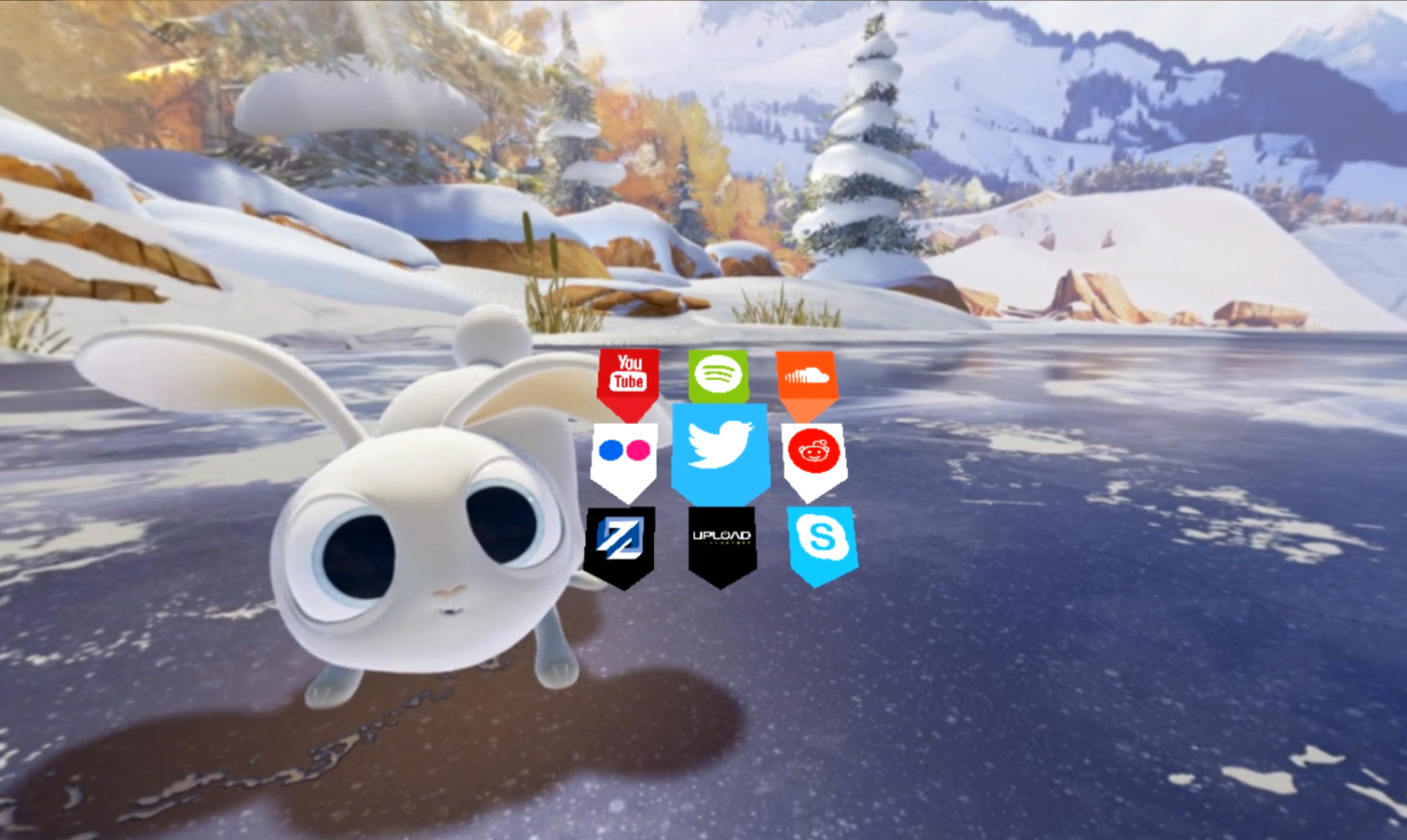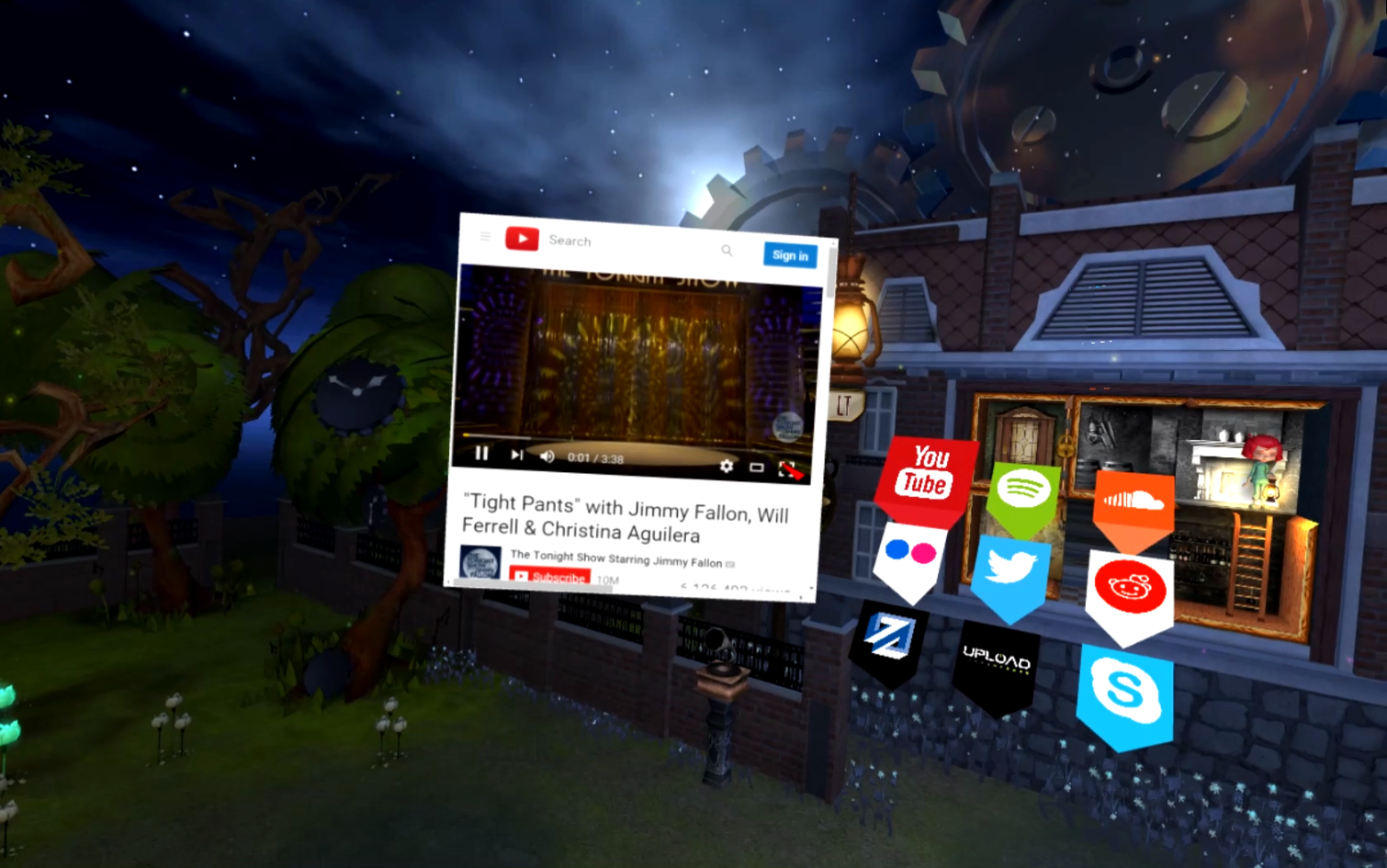Access Web Apps From Inside Your VR HMD With 'V'
Virtual reality hardware is just starting to land into the hands of the most eager early adopters. The medium has tremendous potential for the future, but the industry has to convince the average person that VR is indeed something they want to invest in. Before virtual reality can truly become the next computing platform, it has to offer everything that you can do with a traditional computer system. That means social media, accessing video content, browsing the web and most importantly, the ability to access these things at the same time.
Social media (AltspaceVR) and experiencing video content are things you can do easily in VR, but doing those things while playing a VR game isn’t. Sure, you can play music in the background of a VR game, but you can’t switch the songs easily without taking the HMD off for a moment. You also can’t have a video playing off to the side of your game, like you can if you have more than one display hooked up to your PC.
V might be the answer to that problem. The V platform (built by a company of the same name) enables you to access web-based tools and applications while inside your VR HMD. V allows you to overlay YouTube, Twitter, Soundcloud, Spotify, Skype, websites and practically any other web-based application over top of your game. Imagine watching a video tutorial of a VR game you’re struggling with, while you play along at the same time. Or being able to manage a music playlist without extracting yourself from the immersion.
V (the company) believes that V (the platform) “can help increase connection, utility and value of the VR experience.” The software reconnects you to the outside world, while you’re immersed in the virtual world. V allows you to bookmark apps, which can be accessed on-the-fly within your VR application.
We asked Tyler Anderson, CEO and Co-founder of V, what kind of applications will work with V. He told us that the company has no plans to support desktop applications within the platform (so that CPU resources remain dedicated to the VR game or experience), but you’ll be able to use almost any web-based service, and the company will not be limiting what you can bookmark. Anderson did say that the company plans to let third parties create apps for V, and the company would consider hosting such widgets.
One example we think would be helpful is a notepad app, perhaps with voice recognition, for taking quick notes while playing a game. This would be especially useful for game reviewers (cough, cough).
V will be launching a beta program in June. The initial beta release will be limited to Rift headsets, but the company said that the platform will support Vive “shortly thereafter.” You can sign up to be considered for the beta at V’s website. Anderson said that V will start handing out keys towards the end of May.
Get Tom's Hardware's best news and in-depth reviews, straight to your inbox.
Follow Kevin Carbotte @pumcypuhoy. Follow us on Facebook, Google+, RSS, Twitter and YouTube.
Kevin Carbotte is a contributing writer for Tom's Hardware who primarily covers VR and AR hardware. He has been writing for us for more than four years.


